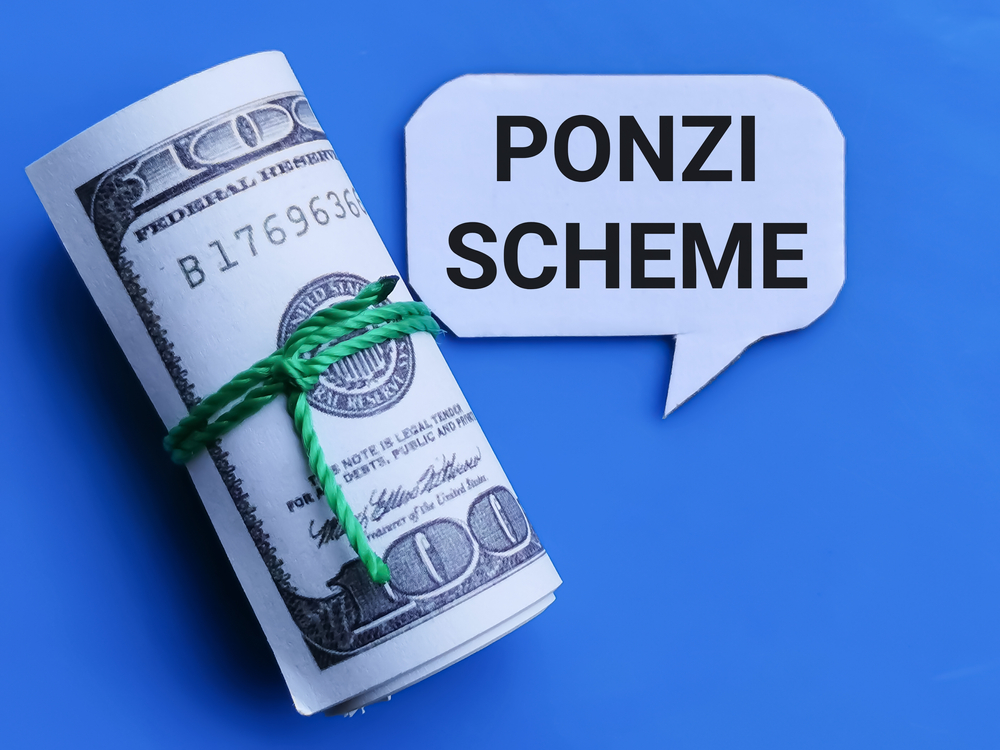There’s an allure to investments that promise extraordinary returns, especially when they’re wrapped in a veneer of sophistication. Yet, as history reminds us, not every gilded opportunity is genuine. Beneath the polish, some “genius” investments are nothing more than elaborate scams, preying on the desires of those looking for the next big financial win. Here are some such investments that seemed brilliant at first glance but turned out to be nothing more than clever cons.
1. The Enron Illusion

Enron was once hailed as an innovative powerhouse, revolutionizing the energy sector with creative trading strategies and cutting-edge technologies. Investors flocked to it, buoyed by lofty promises of growth and unprecedented profit margins. However, beneath the surface lay a complex web of accounting tricks and inflated earnings reports. The collapse of Enron in 2001 exposed the company’s fraudulent activities, resulting in one of the largest bankruptcy filings in U.S. history.
According to a detailed investigation by the U.S. Securities and Exchange Commission, Enron’s downfall was a wake-up call about the dangers of unchecked corporate greed. The company’s top executives were charged with fraud and conspiracy, leading to significant reforms in financial regulations. The Enron scandal highlighted the need for transparency and accountability, reshaping how companies report their financial health. For investors, it was a poignant reminder that if something seems too good to be true, it probably is.
2. The Madoff Mirage

Bernard Madoff’s investment firm was the epitome of prestige and reliability, attracting celebrities and high-net-worth individuals with its steady, predictable returns. Many viewed Madoff as a financial wizard, someone who had cracked the code of Wall Street success. However, this seemingly genius investment strategy was nothing more than a classic Ponzi scheme. When the financial crisis hit in 2008, Madoff’s scheme unraveled, revealing the loss of billions of dollars.
The Madoff scandal served as a harsh lesson in due diligence for investors. Trusting appearances without thorough investigation can lead to devastating consequences. Madoff’s downfall also ignited a conversation about the regulatory oversights that allowed such a massive fraud to persist for so long. It was a stark reminder that meticulous vetting of investment opportunities is essential, no matter how reputable the source seems.
3. The Theranos Deception

Theranos promised to revolutionize healthcare with a simple blood test that could diagnose a myriad of conditions with just a drop of blood. The company’s charismatic CEO, Elizabeth Holmes, captivated powerful investors and media alike, becoming the darling of Silicon Valley. Yet, the technology was fundamentally flawed, and the company’s claims were grossly exaggerated. It all came crashing down when investigative journalism uncovered the truth about the non-existent capabilities of Theranos’s devices.
A pivotal turning point came when The Wall Street Journal published an in-depth exposé revealing the extent of Theranos’s misinformation. This prompted federal investigations and Holmes’s eventual trial for fraud. The saga of Theranos is now a case study in the perils of hype over substance. Investors learned the importance of verifying the underlying technology, not just the charisma of its leaders.
4. The Fyre Festival Fiasco

Marketed as an ultra-luxurious music festival on a private island, Fyre Festival was the epitome of opulence for the socially elite. Promoted by top influencers and promising a weekend of high-class entertainment, the festival drew in a crowd eager for a glamorous escape. Yet, on arrival, attendees found themselves stranded with inadequate accommodations and no music. The entire event was a poorly executed scheme that failed to deliver anything it promised.
The aftermath of Fyre Festival was a media spectacle, featuring lawsuits and documentaries that exposed the fraudulent claims made by its organizers. Despite the allure of influencer endorsements, the festival was a stark reminder of the due diligence needed when investing in or purchasing luxury experiences. The fiasco highlighted the gap between online promises and real-world execution. It served as a cautionary tale about the dangers of believing the hype without substance.
5. The Dot-Com Bubble Bust

In the late 1990s, the internet was the new frontier, and dot-com companies were the golden tickets to unimaginable wealth. Investors were frenzied, throwing money at any company with a “.com” in its name, driven by the promise of digital transformation. However, many of these companies lacked viable business models and sustainable revenue streams. By 2000, the bubble burst, wiping out trillions in market value and leaving behind a trail of bankruptcies.
The aftermath was a daunting period for tech investors, but it also provided valuable lessons in market speculation and hype. A report from the National Bureau of Economic Research highlighted the overly optimistic projections that fueled the frenzy. Those who survived the bust learned that due diligence and a solid understanding of business fundamentals are crucial. The dot-com crash taught that not every tech innovation is destined for greatness, and skepticism can be an investor’s best ally.
6. The Nigerian Prince Scheme

Ah, the infamous Nigerian Prince emails. They promised untold riches in return for just a small advance fee, convincing thousands to part with their money. While it may seem laughable in hindsight, this was a sophisticated scam leveraging the promise of easy wealth. Victims were lured by the allure of financial gain, only to find themselves out of pocket with nothing to show for it.
The sheer persistence and variations of this scam over the years reveal the timeless allure of a quick financial windfall. Despite being an obvious scam to some, it preyed on the hope and greed of many, proving that even the most transparent scams can find victims. It highlighted the need for skepticism in our digital communications and the dangers of blind trust. In the digital age, if you haven’t met the prince in person, it’s best not to open your wallet.
7. The Tulip Mania

The 17th-century Dutch tulip craze is often cited as the first recorded speculative bubble in history. At the peak of Tulip Mania, a single tulip bulb could cost more than a skilled craftsman’s annual income. People from all walks of life invested in tulips, driven by the belief that prices would continue to rise indefinitely. However, the market for tulip bulbs crashed spectacularly in 1637, devastating fortunes and livelihoods.
A study from the London School of Economics suggests that the tulip bubble was a complex interplay of speculative behavior and economic conditions. Yet, the collapse was swift and brutal, leaving many investors in financial ruin. Tulip Mania is a historical illustration of the risks of speculative investing and the dangers of herd mentality. The lesson remains relevant: whenever investment is driven by irrational exuberance, caution should prevail.
8. The South Sea Bubble

In the early 18th century, the South Sea Company captivated British investors with promises of exploiting the riches of the Spanish South American colonies. Shares skyrocketed as people from all walks of life invested in the company, dreaming of untold wealth. The frenzy reached a fever pitch, inflating the value of the company far beyond its actual worth or prospects. However, when reality set in, the bubble burst, leading to widespread financial ruin.
Despite being centuries old, the South Sea Bubble still serves as a timeless lesson in speculative investing and market manipulation. The British government’s involvement and subsequent bailout efforts were a precursor to modern financial interventions. This episode underscored the importance of transparency and regulation in financial markets. It was a reminder that unchecked speculation can lead to economic disaster.
9. The Bre-X Gold Scandal

In the 1990s, Bre-X Minerals Ltd. claimed to have discovered a massive gold deposit in the jungles of Indonesia. The news sent shockwaves through the stock market, propelling Bre-X’s stock to unprecedented heights. Investors were dazzled by the potential gold rush, eagerly buying into the company’s ambitious claims. However, it was later revealed that the supposed gold discovery was a complete fabrication.
The Bre-X scandal exposed the vulnerabilities in the mining industry and the desperation for lucrative discoveries. After investigations revealed the fraud, the company’s stock plummeted, and investors faced significant losses. The scandal prompted changes in mining regulations and due diligence processes to prevent similar occurrences. It served as a harsh reminder that not everything that glitters is gold.
10. The Ponzi Promise

Named after Charles Ponzi, the original architect of the scheme, this investment scam promised high returns with little risk. Initially, investors are paid returns out of their own money or the money paid by subsequent investors, rather than from profit earned by the operation. Ponzi’s scheme in the 1920s promised to double investors’ money in 90 days, but it was unsustainable and eventually collapsed. The fallout was devastating, with many investors losing their entire life savings.
Ponzi schemes continue to persist, evolving with time and technology but maintaining the same core deceit. The scheme exploits the trust and greed inherent in human nature, promising easy riches that never materialize. The enduring presence of Ponzi schemes underscores the importance of vigilance and skepticism in investing. If an investment opportunity guarantees exceptionally high returns with little risk, it’s wise to investigate thoroughly.
11. The Herbalife Controversy

Herbalife, a global nutrition company, faced allegations of operating a pyramid scheme, where profits are derived from recruitment rather than direct sales. The company’s multi-level marketing structure encouraged distributors to recruit others, leading to accusations of deceptive practices. Critics argued that the vast majority of distributors lost money, while only a handful profited significantly. Despite these accusations, Herbalife maintained that it operated legally and ethically.
In 2016, the Federal Trade Commission reached a settlement with Herbalife, demanding changes to its business practices. The settlement highlighted the fine line between legitimate multi-level marketing and exploitative pyramid schemes. For investors, the Herbalife controversy underscored the need to scrutinize business models that rely heavily on recruitment. It served as a reminder that profitability should stem from genuine product sales, not the endless recruitment of new participants.
12. The Wirecard Debacle

Wirecard, once hailed as a rising star in the fintech industry, was a German payment processing company that dazzled investors with promises of technological innovation and profitability. The company’s stock soared, reaching heights that made it a darling of the financial markets. However, in 2020, it was discovered that $2 billion was missing from its balance sheet, and the supposed profits were largely fabricated. The revelation led to the company’s insolvency and a massive scandal in the financial world.
The Wirecard collapse exposed significant weaknesses in regulatory oversight and corporate governance. As investigators delved deeper, they uncovered a complex web of deceit that implicated executives and auditors. The debacle served as a cautionary tale about the risks of unchecked corporate ambition and the importance of rigorous financial scrutiny. For investors, it was a stark reminder to question the authenticity of financial statements, even when they come from seemingly reputable companies.
This article is for informational purposes only and should not be construed as financial advice. Consult a financial professional before making investment or other financial decisions. The author and publisher make no warranties of any kind.








